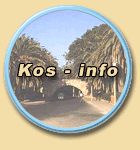|

|
Culture & Tradition.
Back to the Top of the page!
Back to the Top of the page!
Back to the Top of the page!
Back to the Top of the page!
Back to the Top of the page!
Back to the Top of the page!
Back to the Top of the page!
Back to the Top of the page!
From the editions Toubis
Back to the Top of the page!
Take me back to the previous page!
Last update: 19-11-2012.
|

![]()
![]()
![]()
![]()
![]()
![]()
![]()
![]()
![]()
![]()
![]()
![]()
![]()
![]()